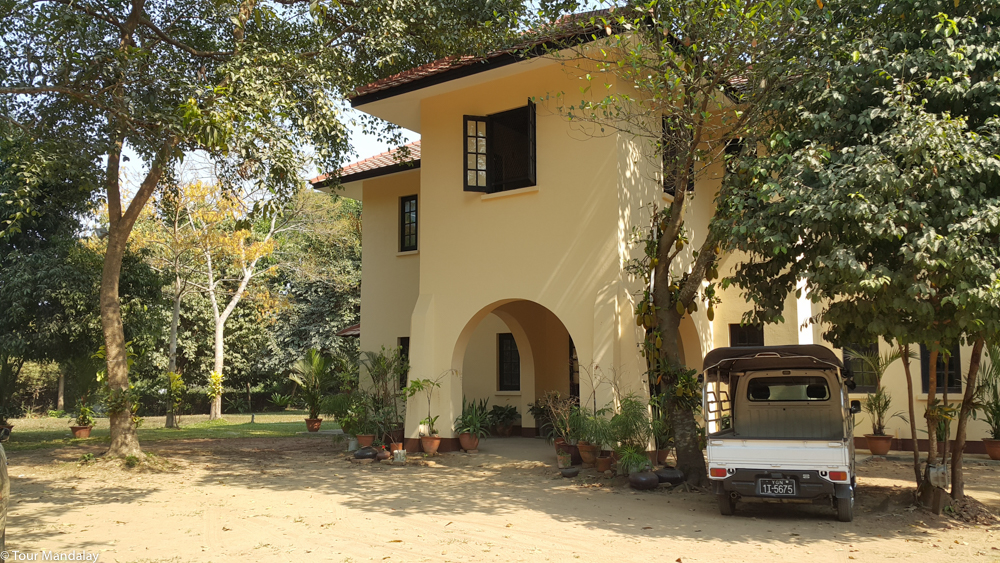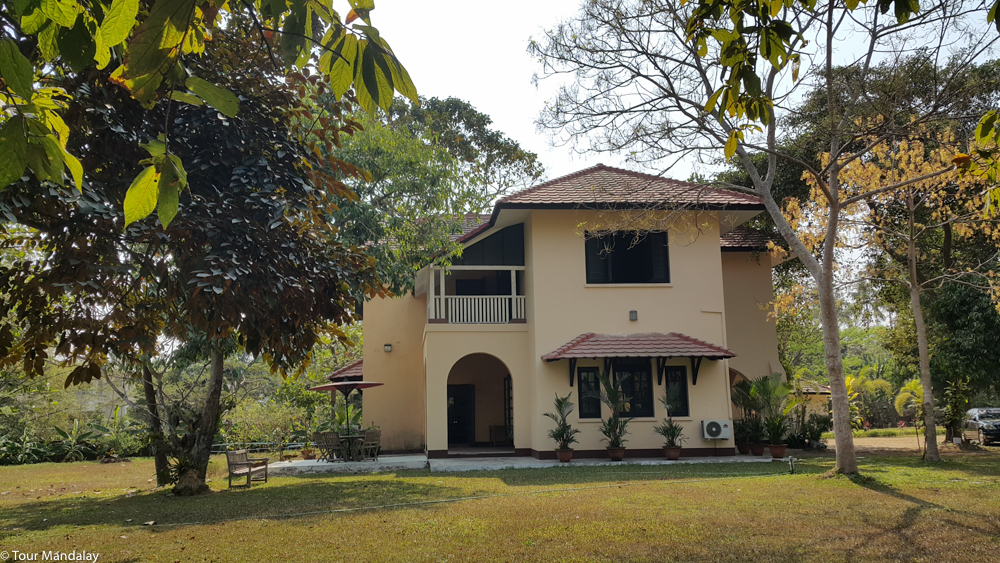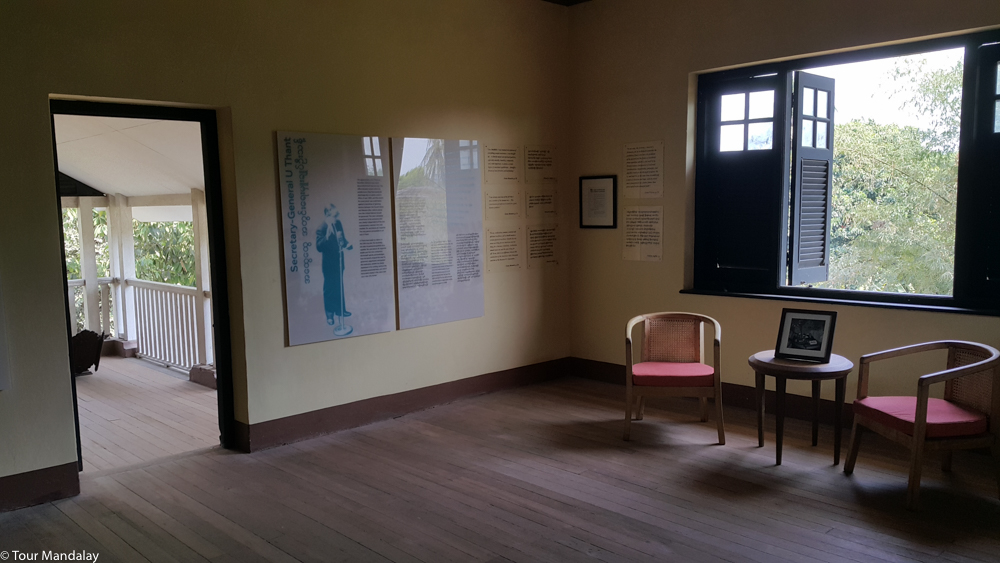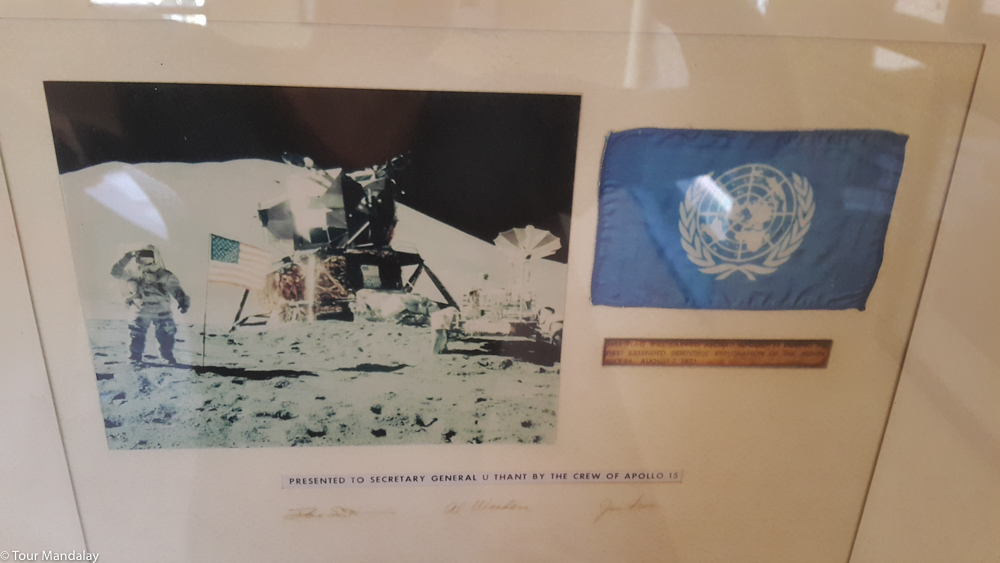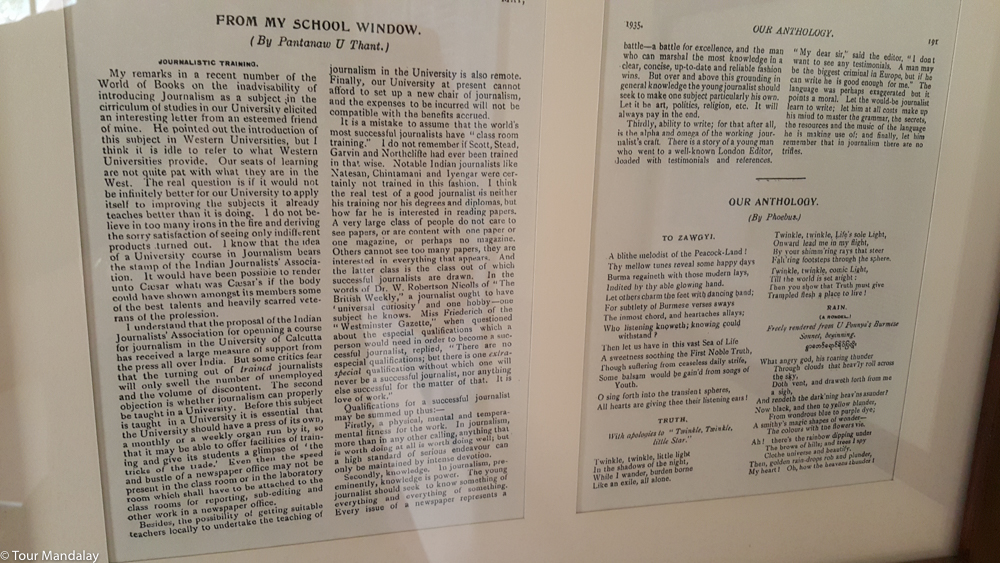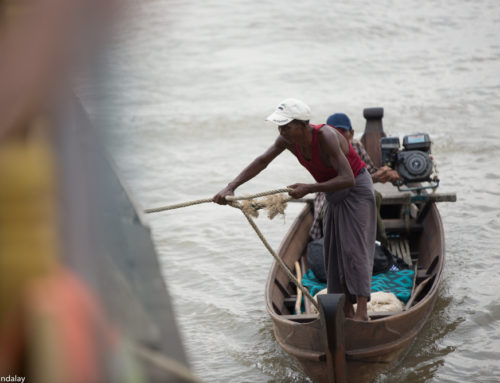We are pleased to announce that U Thant’s house will now be open to the public every Friday, Saturday and Sunday from 10am until 5pm.
The house itself is located on Windermere Crescent, a leafy suburb located approximately 5-10 minutes away from Inya Lake. Although the purpose of a trip here is to learn more about the life and legacy of U Thant, you can’t help but feel impressed by the colonial charm and green space in which the property’s located. If anything, it provides a small slice of that romanticised image many travellers have of Myanmar prior to visiting and it feels a million miles away from the hustle and bustle found in nearby downtown.
Once you’re inside the house, you will find an exhibition of photographs, text, audiovisual material, souvenirs and a comprehensive timeline of this magnificent man’s work. Hopefully the photos below will give you an idea of the set-up.
Visitors will also receive a catalogue of the exhibition, which we imagine would be a nice keepsake for anyone keen to learn more about influential figures in Myamar’s modern day history.
With so much focus on Aung San Suu Kyi (and rightly so!), I found a visit to U Thant’s house extremely refreshing as it focuses on the remarkable life of one of Myanmar’s most intelligent and successful individuals. Internationally speaking, nobody has risen to such a high position of importance outside of Myanmar and his story is one that should greatly appeal to history enthusiasts.
All though it’s free to enter, there is a suggested donation of 5000 kyat (approximately USD5).
For those of you not familiar with U Thant, he was the Secretary General of the United Nations from 1961 to 1971. During this time he facilitated negotiations with President John F Kennedy and Nikita Khrushchev during the Cuban Missile Crisis, ended secessionist insurgency in Congo, was a stern critic of American conduct during the Vietnam War and helped to facilitate the entry of several newly independent African and Asian states into UN.
Born in 1909, in still British-ruled Burma, U Thant would have endured a challenging upbringing with many social barriers and limitations. Even though quality education was hard to come by for a Burmese man during those days, he studied hard and became an expert at English language among other subjects. Thanks to his time at Rangoon University, U Thant managed to brush shoulders with many important political figures such as General Aung San (Myanmar’s independence hero and Aung San Suu Kyi’s father) and U Nu (Myanmar’s first prime minister).
Although U Thant’s focus had always been on providing quality education to those less fortunate, he was eventually persuaded (by U Nu), to take charge of publicity for his Anti-Fascist People’s Freedom League party. He was subsequently asked by Nu to take charge of the press section of the Information Department, where he was so successful that he soon became secretary of the Ministry of Information under the newly independent Burmese government. Thant then emerged as one of the key figures in Burmese political life, eventually becoming secretary to the prime minister. Thanks to this experience under the spot light, he then went on to become Burma’s permanent representative to the UN – a move designed to give the Burmese the best possible representation in the international body.
To read more about his life please click here.
Interestingly, his grandson, Thant Myint U now works as the head of Yangon Heritage Trust and is also the author of The River of Lost Footsteps (the most factual account ever written on Myanmar’s long and not so well documented history).

